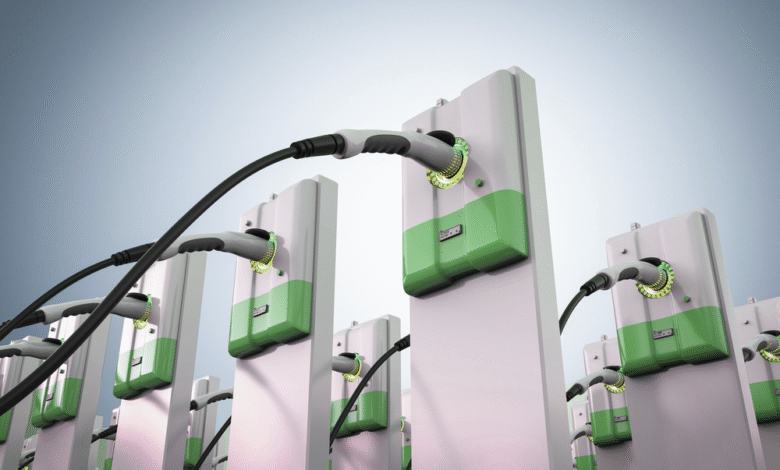The Future of Electric Vehicle Infrastructure: Making the Case for DC Fast Chargers

Electric vehicles (EVs) have rapidly become a cornerstone of sustainable transportation. Over the past decade, the automotive world has witnessed a seismic shift as EV adoption has soared. The push towards greener modes of transport stems from the urgent need to tackle climate change and reduce dependency on fossil fuels. Environmental concerns have magnified as we reckon with the realities of climate change, leading to increased regulatory pressure to lower carbon emissions and adopt cleaner technologies. The rise in electric vehicle popularity is aided by government incentives such as tax breaks, subsidies on EV purchases, and investments in EV infrastructure. A crucial part of this infrastructure is the deployment of DC fast chargers, which play a strategic role by significantly reducing charging times and making electric driving more convenient.
What Are DC Fast Chargers?
DC fast chargers are advanced charging units that supply direct current (DC) power to vehicle batteries, bypassing the onboard charger that converts AC power to DC. This is a necessary step with slower chargers. This direct approach allows for a much faster energy transfer, drastically reducing the time it takes to recharge an electric vehicle’s battery. Unlike Level 1 chargers, which can take an entire night to charge an EV fully, and Level 2 chargers, which require several hours, a DC fast charger can replenish battery levels by up to 80% in under an hour. This efficiency suits them for roadside locations; highway rest stops, and urban areas where quick turnarounds are essential for busy commuters and travelers alike.
Benefits of DC Fast Chargers for Consumers
The primary benefit of DC fast chargers for consumers is their speed, drastically enhancing the EV ownership experience. The ability to quickly add hundreds of miles of range in mere minutes addresses one of the most common concerns among potential EV buyers: range anxiety. This fear of running out of battery power without finding a nearby charging station has significantly impeded broader EV adoption. Fast-charging solutions directly confront this issue, making long-distance travel feasible and reducing interruptions. Furthermore, according to an industry expert article, faster charging capabilities lead to greater satisfaction among users, who appreciate the reduced wait times and increased confidence in their vehicles’ capabilities. These factors collectively contribute to rising consumer interest and increasing electric vehicle sales.
Challenges in Implementing DC Fast Chargers
Despite their numerous benefits, implementing DC fast chargers does not come without challenges. One of the most significant hurdles is the high initial investment costs required for setting up these chargers. The infrastructure required to support high-powered charging solutions is substantial, often requiring upgrades to the existing power grid to handle the increased electrical load. Moreover, the technical demands of managing high-capacity charging stations pose additional challenges. Concerns about grid capacity are prominent, particularly during peak demand times when the stress on energy infrastructure is the highest. Developing solutions to efficiently balance and distribute power, minimize disruptions, and manage peak loads is crucial for seamlessly integrating DC fast chargers into the broader electricity network.
Case Studies of Successful Implementations
Several countries and regions have blazed the trail in successfully implementing DC fast chargers, offering valuable lessons for others exploring similar paths. Take Norway, a nation leading the way in electric vehicle adoption. Norway has developed a comprehensive network of charging stations with numerous DC fast chargers through a robust policy framework, including government incentives and public-private partnerships. This successful integration has facilitated significant growth in EV ownership and usage within the country. In the United States, states like California have also taken proactive steps by preparing to upgrade their charging infrastructures in anticipation of higher EV demands, setting an example for others to follow.
The Role of Policy and Regulation
Government policy and regulation play an indispensable role in fostering the growth of electric vehicle infrastructure. Strategic regulatory frameworks can accelerate the development and deployment of DC fast chargers by providing necessary support and incentives to developers and consumers. Policies targeting improvements in battery technology, standardization of charging protocols, and energy efficiency create a conducive environment for growth. For instance, government grants and subsidies can offset initial setup costs for developers, making it more appealing for private investors to build charging networks. Moreover, policies such as building codes that require new constructions to include EV charging capabilities can further catalyze the widespread adoption of electric vehicles.
Future Trends in Charging Technology
The future of electric vehicle charging technology looks promising as developers continue to innovate and push the boundaries of efficiency. One emerging trend is the integration of renewable energy sources with charging stations, potentially reducing reliance on fossil fuels and lowering the transportation sector’s carbon footprint. Smart grid technology is another development area, offering potential solutions for more balanced energy distribution and efficient grid management. As these technological advances continue to unfold, the future of electric vehicle charging will likely see even faster, more efficient systems capable of meeting the growing demand for clean, sustainable transportation options.
Conclusion: Driving the Future of Mobility
DC fast chargers are essential in the ongoing transformation of the global transportation landscape. By facilitating quicker and more convenient charging options, they can dispel some of the most common concerns associated with electric vehicles and pave the way for a new era of clean mobility. As these solutions become increasingly integrated with broader energy networks and supported by forward-thinking policies and innovative technologies, the path to widespread electric vehicle adoption will become clearer and more accessible. The collaborative efforts of consumers, manufacturers, and policymakers are pivotal in steering the future toward a more sustainable and electric-oriented society.



